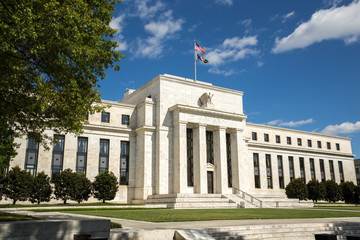 Again, citing the negative impact of trade wars that the USA itself has stoked with various nations around the world, most notably China, and a slowing global economy to which the policy contributes, the US Federal Reserve has announced a further rate cut. The 0.25% reduction in rates is the third cut in a four month period and drops the band of interest rates to 1.5 to 1.75%.
Again, citing the negative impact of trade wars that the USA itself has stoked with various nations around the world, most notably China, and a slowing global economy to which the policy contributes, the US Federal Reserve has announced a further rate cut. The 0.25% reduction in rates is the third cut in a four month period and drops the band of interest rates to 1.5 to 1.75%.
The move means that US interest rates have fallen by a full percent point since the early summer when they stood at an historically modest level of 2.5%. The long-term average interest rate in the USA is 5.64% (1971 to date) with an all time high of 20% in March 1980 and a record low of 0.25%, from December 2008.
The Fed is seeking to use interest rate policy to provide stimulation to the US economy because of the effects of the slowdown in global demand. US growth in Q3 slipped to an annualised rate of 1.9%.
However, it seems likely that the current reduction in interest rates will be the last for a while. Jerome Powell, the chairman of the Federal Reserve commenting after the Fed’s Open Market Committee meeting (FOMC), said: “we see the current stance of policy as likely to remain appropriate”. The explanation for this optimistic note is that the committee believes that risks to the US economy have declined due to a preliminary US-China trade pact and the decreased likelihood of a “no deal” Brexit in the UK.
The rate cut was not unanimous, but was backed by 8 FOMC members whilst two voted to leave the rate untouched.
The official level of unemployment in the USA stands at its lowest level for 50 years and inflation is currently running at 1.7%. Like many central banks, the Federal Reserve targets a low, stable inflation figure of 2%, so the current level is slightly, but probably not worryingly, below target.

